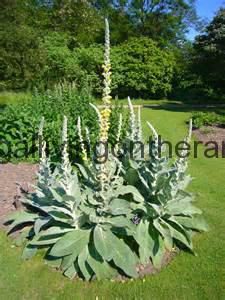
photo from commons.wikimedia.org
This is another one of my go to herbs, and was one of the first herbs I started using. Love this stuff and it grows all over the place here.
Habitat and Description
Common mullein is native to Europe, but it is now found on every continent except Antarctica. It’s really found pretty much everywhere in the U.S. It prefers dry, sandy soils, but can grow in rich garden soil, even grow in marginal soils such as chalk and limestone. It can be found in neglected meadows, forest openings, pastures, fence rows, roadsides, industrial areas, even gravel, and rocky soil in full sun.
Common mullein is a biennial, which means that it takes two years to reach maturity. The first year the plant forms a rosette of large, wooly, hairy, velvety leaves that can grow up to 1 foot long. The silver-green foliage gives the plant an artificial waxed appearance. In the second year, a velvety flower spike grows and can get as tall as 8 feet, it has many small yellow flowers on it. Plants reproduce solely by seed. One plant can produce of 100,000 seeds, which can stay viable up to 100 years in the soil.
It goes by many other names some are flannel flower, Quaker’s rouge, bunny’s ear, candle wick, great mullein, miner’s candle, poor man’s blanket, hag’s taper, ice leaf, or Cowboy Toilet Paper. Great Mullein, Aaron’s Rod, candlewick plant, flannel plant, flannel leaf, lungwort, feltwort, shepherd’s staff, velvet dock, woolly mullein, torch plant, and many more.
Medicinal Benefits
This is one of the herbs that has several uses.
Mullein Tea, is used to treat respiratory problems, such as asthma, bronchitis, calms coughs, chest colds removes congestion and mucus from the respiratory track, and coat sore throats.
Mullein poultices can be used to treat bruises, tumors, rheumatic pains and hemorrhoids.
Mullein Oil, can be used to treat earaches or wax build up, you can also add a little garlic for ear aches. It helps heal minor burns, cuts, wounds, eczema and psoriasis. It also helps gets rid of fungal infections of the skin, like ringworm. It is also good for sore muscles.
How to use Mullein
Tea / Infusion
Tea can be made from both fresh and dried cut leaves and flower heads, Great for colds, chest and sinus congestion. When making tea bring water to a boil remove from heat and add the Mullein let steep 15 minutes add honey if desired.
Salves and oils
You can go here to see how to make oils and salves
For Earaches Mullein oil is a powerful remedy for earaches. put 3 – 4 drops of the mullein oil ( not the essential oil ) in both ears. The oil should be at the right temperature, that is at human body temperature. Mullein oil helps to get rid of ear infections, whether they are bacterial or fungal. Since ear infections are common in children, it is a very useful thing to keep at home
For Cough Mullein oil can helps alleviate cough in many conditions like bronchitis, asthma, whooping-cough, sinusitis, tuberculosis and pneumonia. Add some of mullein oil to a large pan of boiling water. Inhale the steam coming from the pan for about 10 minutes. Mullein oil helps to soothe the respiratory passage, alleviates congestion and promotes release of phlegm.
For muscle pain and arthritis Mullein is a very soothing herb for muscular pain and cramps. Apply this oil directly to the aching muscles. Or you can make a salve with some added eucalyptus oil to rub on achy and crampy muscles.
Poultice
Use fresh mashed leaves in a poultice on minor burns and insect bites.
Miscellaneous uses
You can dip a dried seed head stalk, in bees-wax, tallow, or pine sap for a long-burning torch.
You can place leaves in the bottom of your shoes to keep your feet warm or for extra padding.
Mullein can also be using for dying. Use the flowers for a bright yellow dye.
And as with any herbs if pregnant always consult your doctor. The information contained in this page is for educational purposes only and is not intended or implied to be a substitute for professional medical advice diagnosis, or treatment.
Have you ever used Mullein ? If so how did you use it?



Thanks for sharing! We had some mullein pop up in our garden this year and I totally let it go to waste. 🙁 Hopefully some will come back this year! Stopping by from the This is How We Roll link up.
Alicia,
Thanks for stopping by. I have been trying to get it to grow in my yard without much luck, going to try a different spot this year and hope it works, I lovr this stuff when I get a cold a few cups of tea early helps with the cough and congestion.
Have a great day,
Connie
I’ve never heard of this plant before! Thanks for sharing on the Waste Less Wednesday Blog Hop.
I’ve had some of this pop up in my garden now and then. Reminds me a little of lambs ear. Thanks for sharing with SYC.
hugs,
Jann